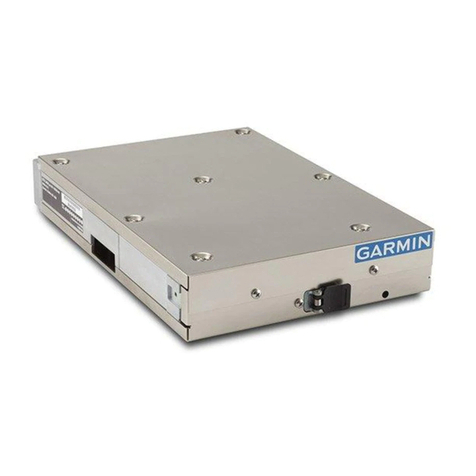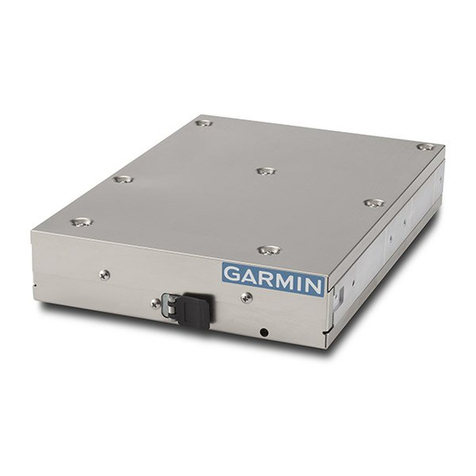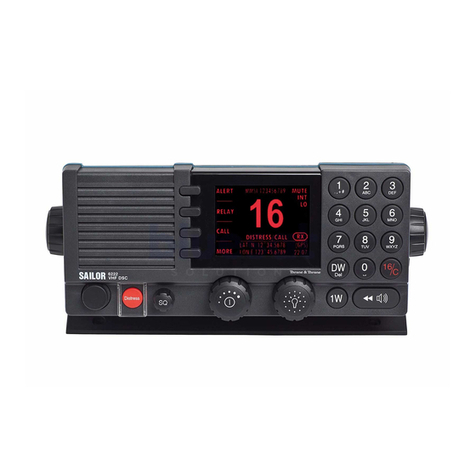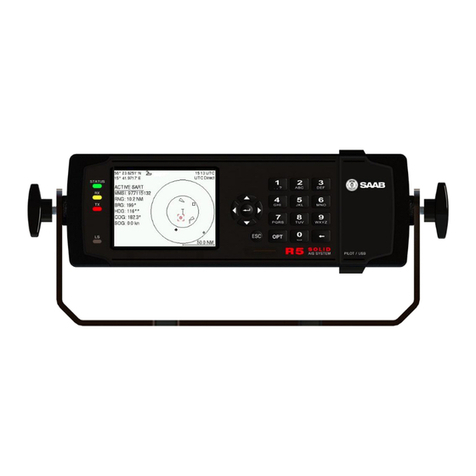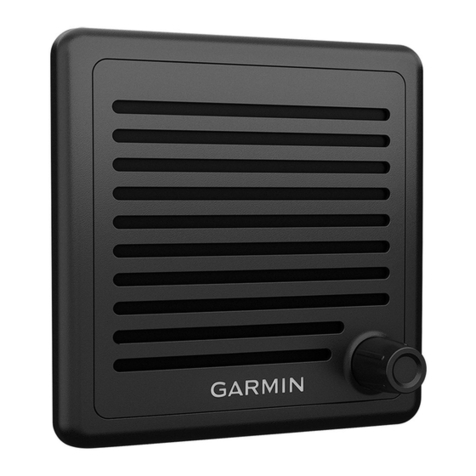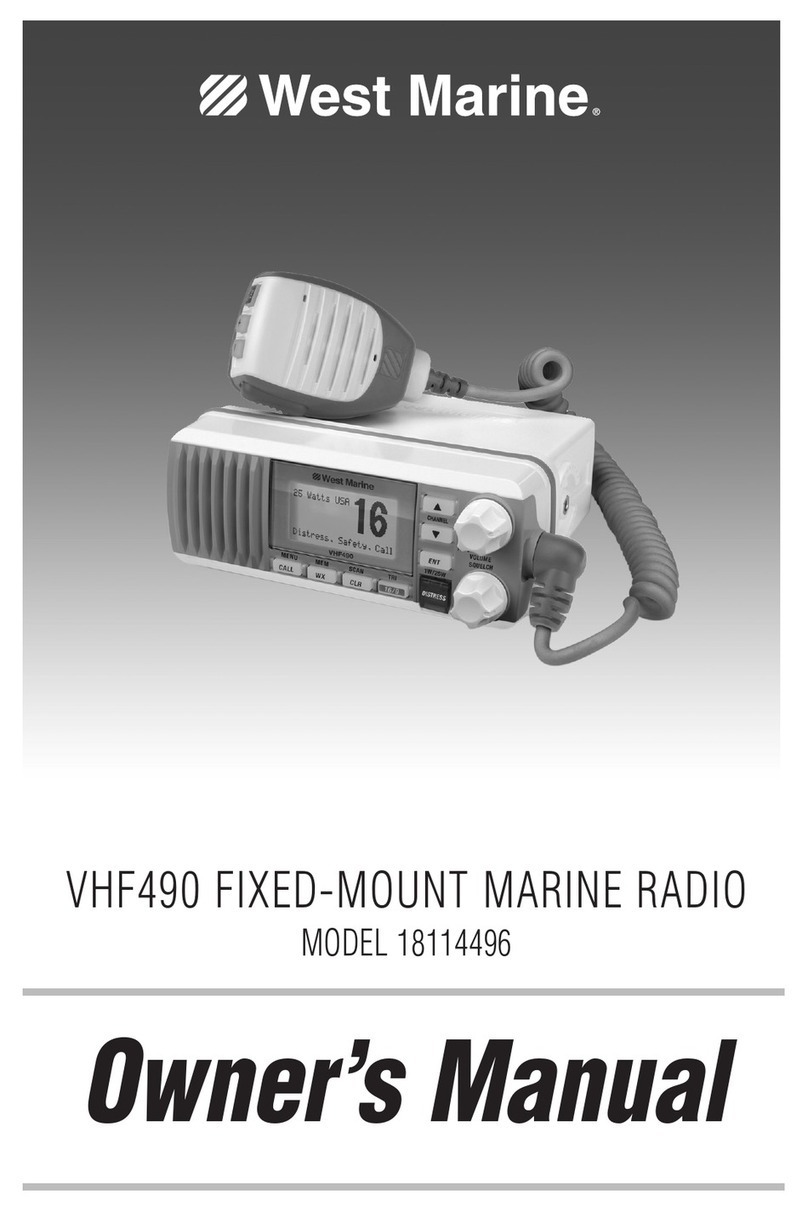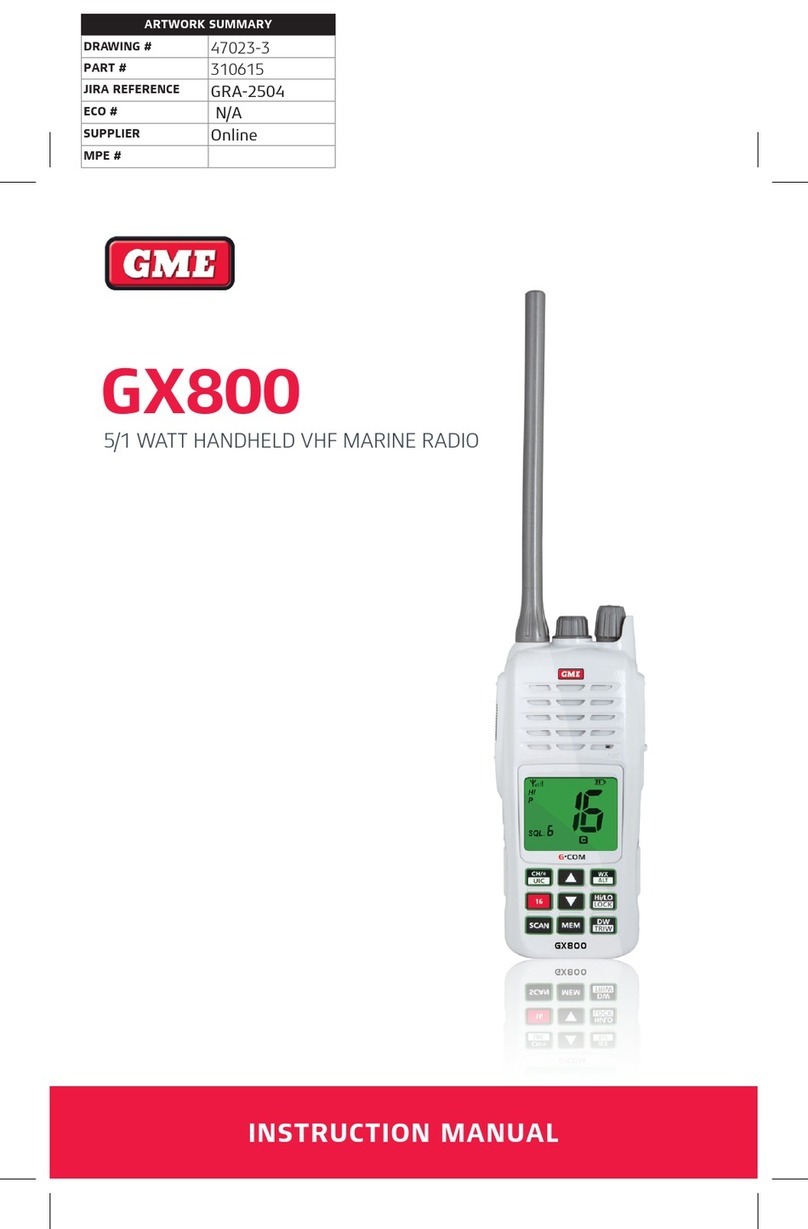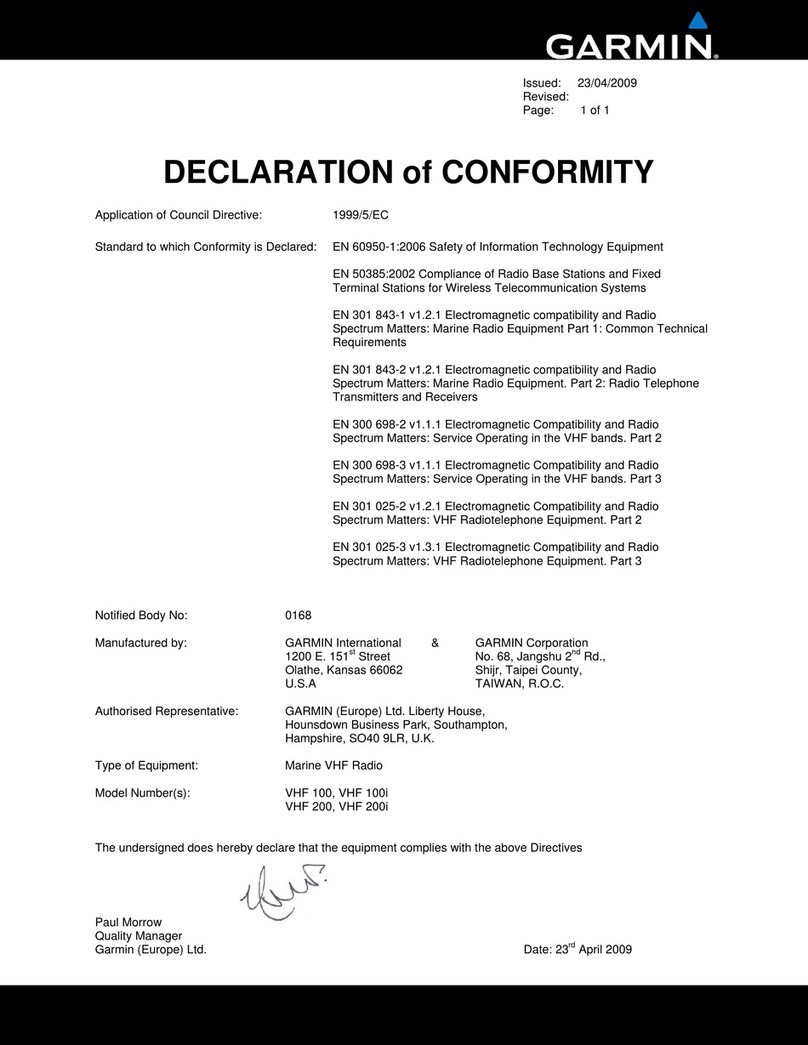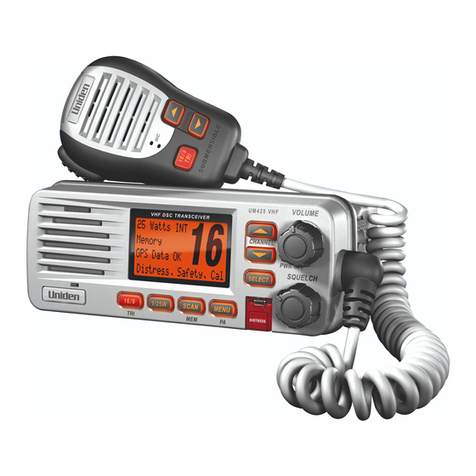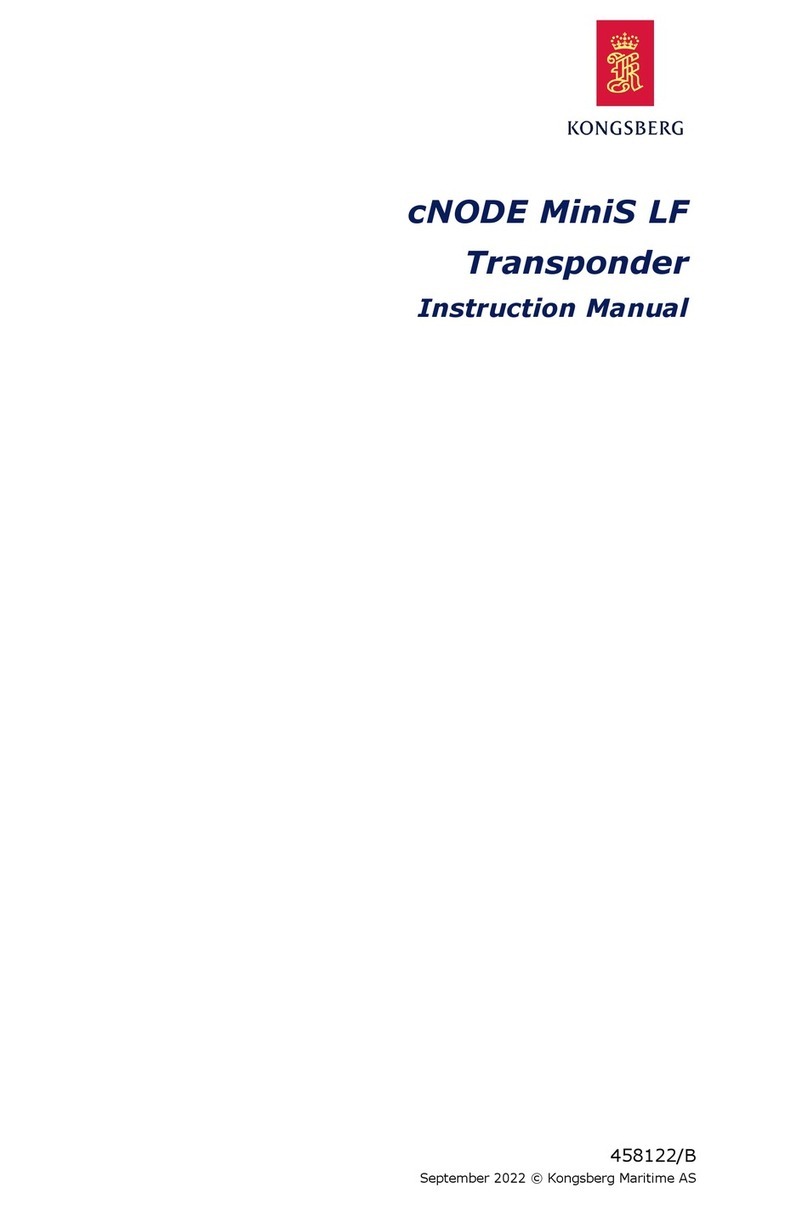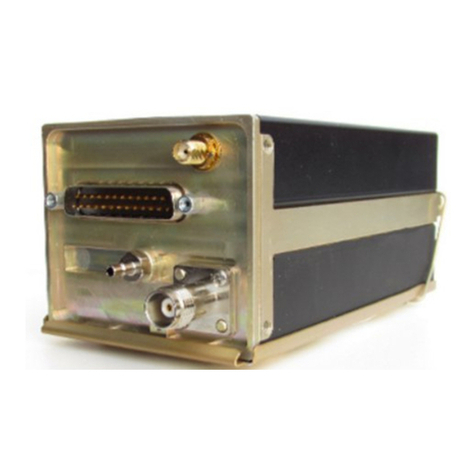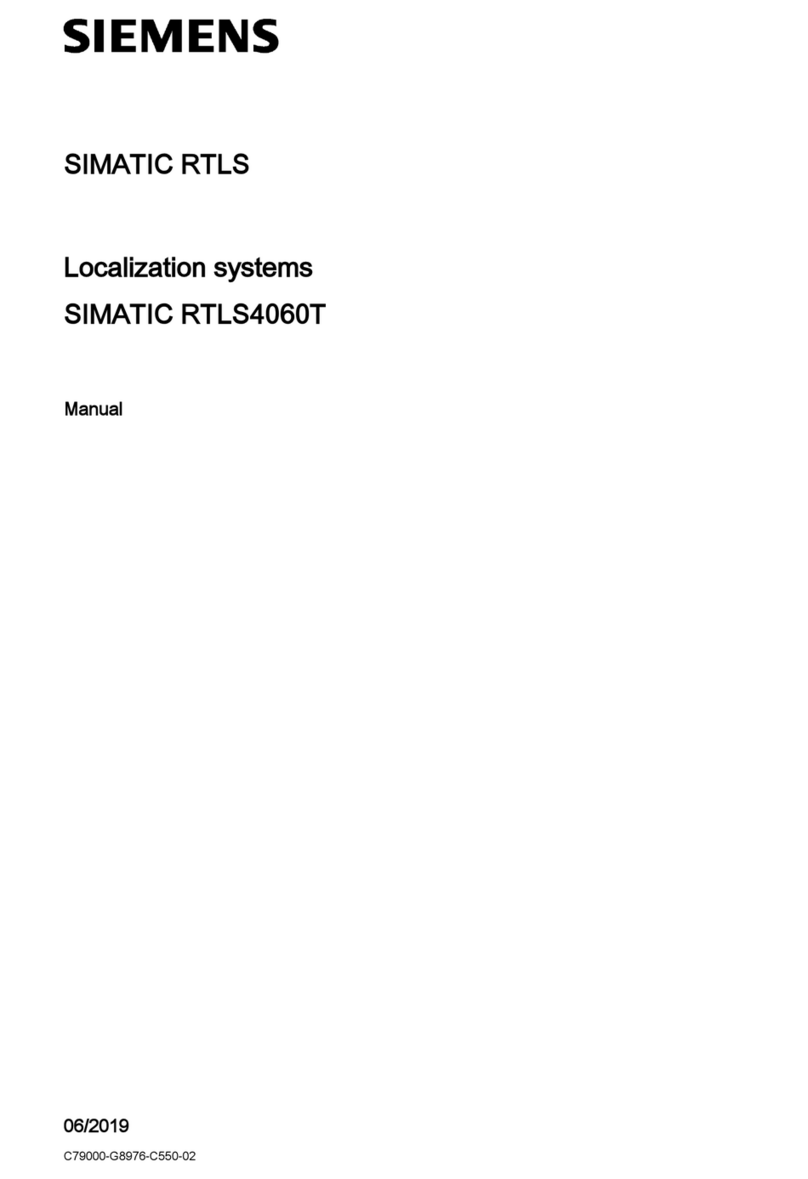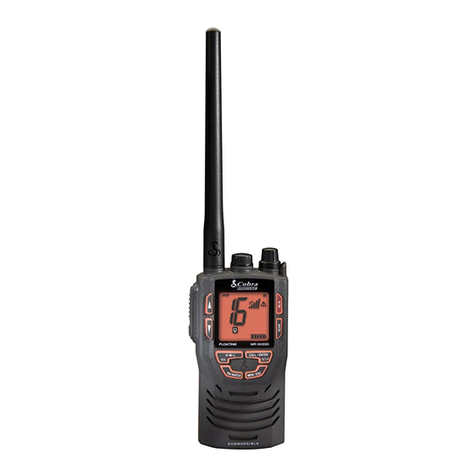Deister electronic LCA 500 User manual

preliminary_fcc_lca-500_manual_en_896322_v200428_rev_3.docx
www.deister.com
LCA 500
Wiring and Installation Instructions

2
preliminary_fcc_lca-500_manual_en_896322_v200428_rev_3.docx
Regulatory Notices
Hereby, deister electronic declares that the radio equipment type LCA 500 is in compliance with Directive
2014/53/EU. The full text of the EU declaration of conformity is available at the following internet address:
http://go.deister.com/ce
Approved for use in all European countries.
FCC 15.105 Statement:
“This equipment has been tested and found to comply with the limits for a Class B digital device, pursuant
to Part 15 of the FCC Rules. These limits are designed to provide reasonable protection against harmful
interference in a residential installation. This equipment generates, uses and can radiate radio frequency
energy and, if not installed and used in accordance with the instructions, may cause harmful interference
to radio communications. However, there is no guarantee that interference will not occur in a particular
installation. If this equipment does cause harmful interference to radio or television reception, which can
be determined by turning the equipment off and on, the user is encouraged to try to correct the interfer-
ence by one or more of the following measures:
–Reorient or relocate the receiving antenna.
–Increase the separation between the equipment and receiver.
–Connect the equipment into an outlet on a circuit different from that to which the receiver is connected.
–Consult the dealer or an experienced radio/TV technician for help”.
Changes or modifications not expressly approved by Deister could void the user’s authority to operation
the equipment under FCC 15.21 requirements.
Industry Canada Statement:
This device contains licence-exempt transmitter(s)/receiver(s) that comply with Innovation, Science and
Economic Development Canada’s licence-exempt RSS(s). Operation is subject to the following two condi-
tions:
1. This device may not cause interference.
2. This device must accept any interference, including interference that may cause undesired operation of
the device.
The safe distance for nerve stimulation is 2 inches.
L’émetteur/récepteur exempt de licence contenu dans le présent appareil est conforme aux CNR d’Inno-
vation, Sciences et Développement économique Canada applicables aux appareils radio exempts de li-
cence. L’exploitation est autorisée aux deux conditions suivantes :
1. L’appareil ne doit pas produire de brouillage;
2. L’appareil doit accepter tout brouillage radioélectrique subi, même si le brouillage est susceptible d’en
compromettre le fonctionnement.
La distance de sécurité pour la stimulation nerveuse est de 5 cm.

3
preliminary_fcc_lca-500_manual_en_896322_v200428_rev_3.docx
Disclaimer
deister electronic GmbH is not able to supervise the observance of the instructions given in this manual as
well as the conditions and methods used during installation, operation and maintenance of the electronic
devices and components respectively. Therefore we disclaim liability and reject responsibility for any losses,
damages or costs that are caused by misap- plication, installation, handling errors or faulty operation or
related to the above in any other way. All our products are subject to current advancement, therefore we
reserve the right for modifications without prior notice.
All rights reserved. No part of this publication may be reproduced, stored in a retrieval sys- tem, or trans-
mitted, in any form or by any means, electronic, mechanical, photocopying, recording, or otherwise, without
prior written permission of deister electronic GmbH.
deister electronic GmbH reserves the right to make changes to any and all parts of this documentation
without obligation to notify any person or entity of such changes.
deister electronic GmbH
Hermann-Bahlsen Str. 11
30890 Barsinghausen
Germany
Phone: +49 (0) 51 05 - 51 61 11
Fax: +49 (0) 51 05 - 51 62 17
E-Mail: [email protected]m
Web: www.deister.com

4
preliminary_fcc_lca-500_manual_en_896322_v200428_rev_3.docx
Content
1. General Information ................................................................................ 5
2. Technical Data ........................................................................................ 5
3. Mechanical Dimensions........................................................................... 6
3.1 LCA 500.................................................................................................................................................................. 6
4. Connectors ............................................................................................. 7
5. Description of Connectors and Switches.................................................. 8
5.1 I/O Connector....................................................................................................................................................... 8
5.2 RS-485 IN Connector ......................................................................................................................................... 8
5.3 RS-485 OUT Connector..................................................................................................................................... 8
5.4 Mainboard/Terminal Connector ..................................................................................................................... 8
5.5 RS-485 Terminator Switches............................................................................................................................ 9
6. Signalization (Factory settings)................................................................ 9
6.1 Configuration via DeisterConfig.................................................................................................................... 10
6.2 Device Info............................................................................................................................................................ 11
6.3 Basic Setup .......................................................................................................................................................... 12
6.4 Brightness ............................................................................................................................................................ 12
6.5 Trigger Setup...................................................................................................................................................... 12
7. Firmware update via DeisterConfig........................................................ 14
8. Installation Instructions......................................................................... 16
8.1 Possible interference sources ........................................................................................................................ 16
8.2 Field Characteristics .......................................................................................................................................... 16
9. Do´s and don’ts.................................................................................... 17

5
preliminary_fcc_lca-500_manual_en_896322_v200428_rev_3.docx
1. General Information
The locator LCA 500 is a major component in the amanTag Human and Asset-Protection System.
It simultaneously receives and processes the signals of the amanTag Transponders. It transmits a constant
wake-up signal with a location code up to a range of 5 m.
2. Technical Data
Dimensions ØxH: 175 x 53 mm
Material: ASA
Protection class: IP40
Operating temperature: +5...+50°C
Relative humidity: 5…95%, non-condensing
Power supply:24 VDC / 0.5 A
Frequencies:
Wake-up frequency: 125 kHz
Working frequency: 868 MHz (EU)
916-921 MHz (US)
Wake-up range: Up to 5 m
Interfaces: RS-485
1x TCP/IP (optional)
Switching outputs/inputs: 1x input
2x isolated relay outputs,
30 VDC / 1A

7
preliminary_fcc_lca-500_manual_en_896322_v200428_rev_3.docx
4. Connectors
Terminal-Board LCA 500
Mainboard LCA 500
RS-485 IN Connector
RS-485 OUT Connector
I/O Connector
1
1
1
Mainboard Connector
Terminal/Mainboard Connector
RS-485 Termination Switch

8
preliminary_fcc_lca-500_manual_en_896322_v200428_rev_3.docx
5. Description of Connectors and Switches
5.1 I/O Connector
Pin
Symbol
Description
1
I+
Input: positive contact
2
I-
Input: negative contact
3
K2NO
Relay 2 normal open contact
4
K2COMMON
Relay 2 common contact
5
K2NC
Relay 2 normal close contact
6
K1NO
Relay 1 normal open contact
7
K1COMMON
Relay 1 common contact
8
K1NC
Relay 1 normal close contact
5.2 RS-485 IN Connector
Pin
Symbol
Description
1
+V
Positive Power Supply
2
GND
Ground
3
A
RS-485 A (non-inverted Data Line)
4
B
RS-485 B (inverted Data Line)
5
SYNCIN
Positive Sync Input
6
/SYNCIN
Negative Sync Input
5.3 RS-485 OUT Connector
Pin
Symbol
Description
1
+V
Positive Power Supply
2
GND
Ground
3
A
RS-485 A (non-inverted Data Line)
4
B
RS-485 B (inverted Data Line)
5
SYNCOUT
Positive Sync Output
6
GND
Negative Sync Output
5.4 Mainboard/Terminal Connector
Use these RJ45-Connectors to connect the mainboard to the terminal board with the provided RJ45-Cable.

9
preliminary_fcc_lca-500_manual_en_896322_v200428_rev_3.docx
5.5 RS-485 Terminator Switches
Termination can be activated by flipping the termination switch to the “ON” position. This must be done if
the device is on either end of the bus. Most RS-485-buses require termination resistors across the conduc-
tor pair. The need for termination has to be checked for each installation. Especially for high data rates or
long cables, the resistors are absolutely necessary. Only the ends of the main cable require termination
resistors, additional resistors load the driver excessively. The resistor value matches the cable's differential-
mode characteristic impedance (100-120 Ohm). On the RS-485-bus you need a controller with fail-safe
biasing, meaning a pull-up and a pull-down resistor on the cable. The fail-safe biasing provides a known
state in case there is no active driver on the bus and therefore it is essential, independent from data rates
and length of the cable.
Controller
without termination resistor
B
A
Locator
Locator
Locator
120 Ohm
(with fail-safe biasing
incl. termination resistor)
with termination resistor
B
A
+5 V
130 Ohm
680 Ohm, 0.5 W
680 Ohm, 0.5 W
stubline max. 5 m (16 feet)
cable length max. 1200 m (4000 feet)
Example:
(680R+680R) || 130R = 119R
Technical data (for baud rates up to 115 kBaud):
Max. cable length: 1200m (4000 feet)
Recommendation
for the cable: twisted pair, cable-cross-section at least 0,22mm² (AWG 24)
Differential-mode characteristic impedance 100-120 Ohm
6. Signalization (Factory settings)
1) Yellow LED: Line voltage indicator
After connecting the power supply, the device shows that it is ready to operate by permanently activating
the yellow LED.
The yellow LED is off for 200ms, when a transponder has been read.
The yellow LED is off during configuration via DeisterConfig.
The yellow LED is off during a firmware update.
2) Green LED: Read indicator
The green LED activates after connecting the power supply during initialization phase.
The green LED is permanently off in operating mode.
The green LED is on for 200ms, when a transponder has been read.
The green LED is flashing during configuration via DeisterConfig.
3) Red LED: Status indicator
The red LED activates after connecting the power supply during the initialization phase.
The red LED is permanently off in operating mode.
The red LED is flashing during configuration via DeisterConfig.
The red LED is on during a firmware update.

10
preliminary_fcc_lca-500_manual_en_896322_v200428_rev_3.docx
4) Beeper
After connecting the power supply, the beeper gives a 30ms beep when operational mode is reached. The
beeper is on for 200ms, when a transponder has been read (this may be changed in configuration).
All signalization devices are configurable.
6.1 Configuration via DeisterConfig
Autotrim is automatically triggered on every startup of the reader.
•Connect the LCA 500 to a communication adapter (e.g.: SNG 3).
•Connect the communication adapter to a PC.
•Supply LCA 500 with DC Voltage 12…24V.
•Launch DeisterConfig.exe
•The following start screen appears:
•The content of the start screen depends on the connected devices.
•In this example the LCA 500 is connected to COM8.
•Double click with left mouse button on corresponding COM PORT.

11
preliminary_fcc_lca-500_manual_en_896322_v200428_rev_3.docx
The configuration data of the device is loaded from the device and will be displayed:
6.2 Device Info
Field Device Info contains information about the device:

12
preliminary_fcc_lca-500_manual_en_896322_v200428_rev_3.docx
6.3 Basic Setup
The following parameters may be changed from the Basic Setup panel:
•Field ID: Changing the Field ID is only necessary, if more than one device is mounted within the
Radio Range of the transponders. This requires the field ID to be unique.
•Reading range control: This will adjust the read range from 10% to 100%
•Wait for guard timeout (ms): This is the time it takes for the locator to respond when a “Need
Guard” transponder enters the field without its “Guard”.
•Signal not polled: If this option is activated, the locator signals by flashing yellow when it is not polled.
6.4 Brightness
The brightness of the individual LED colours can be adjusted. LED test can be used to check (first click on
test, then the color).
6.5 Trigger Setup
•Use input 1 of locator as trigger: The locator field can be triggered by an external signal on input
1.
•Trigger time after edge (ms): For edge controlled triggering, the time has to be specified.

13
preliminary_fcc_lca-500_manual_en_896322_v200428_rev_3.docx
If the external triggering is deactivated again, the locator must be restarted after
saving in order for the option to be accepted.

14
preliminary_fcc_lca-500_manual_en_896322_v200428_rev_3.docx
7. Firmware update via DeisterConfig
•Connect the locator to a communication adapter (e.g.: SNG 3).
•Connect communication adapter to a PC.
•Supply locator with DC Voltage in the range of 12…24V.
•Launch DeisterConfig.exe.
The following start screen appears:
•The content of the start screen depends on the connected devices.
•In this example the locator is connected to COM8.
•Double click with left mouse button on corresponding COM PORT.

15
preliminary_fcc_lca-500_manual_en_896322_v200428_rev_3.docx
The configuration data of the device is loaded from the device and will be displayed:
In order to update the firmware of the device, select Update firmware from the menu Device.
Select the folder where the firmware is stored. After double clicking on the file, the update process starts:
After the firmware is updated successfully, the following dialog appears:

16
preliminary_fcc_lca-500_manual_en_896322_v200428_rev_3.docx
8. Installation Instructions
8.1 Possible interference sources
It is possible that external interference sources will influence the read range, e.g.
CRT monitors, switching power supplies, power cables
parallel to data cables,
mounting on metal etc.
In particular, the reader should be mounted on non-metallic material, such as plastic or wood. Metal screws
(M6 - ISO 1207, 4762 or 7045) for mounting the reader have an insignificant influence on the read range
and may thus be used.
With growing distance between reader and an interference source, the influence
decreases. Use only regulated power supplies. deister electronic GmbH offers suitable
power supplies. To reduce the influence of external electrical interference, connect
the cable shield to ground (GND) of the power supply.
8.2 Field Characteristics
The following diagram shows the read range of the LCA 500. Please note that the read range varies de-
pending on the position of the transponder as shown in the diagram below. The presence of any magnetic
material such as steel changes the given shape.
100 % Performance
LCA 500
80 % Performance

17
preliminary_fcc_lca-500_manual_en_896322_v200428_rev_3.docx
9. Do´s and don’ts
Do not place transponder in short circuit coil or
in metal frame!
Install transponder in front of or behind the short-
circuit coil or metal!
Do not install reader directly on metal!
One meter distance to a metal sheet results in a ne-
glectable effect on the field.

18
preliminary_fcc_lca-500_manual_en_896322_v200428_rev_3.docx
Do not use near devices that interfere in the range
of 125 kHz / 868 MHz (e.g., old forklifts).
No interference in the range of 125 kHz / 868 MHz
guarantees optimal performance.
The signal energy of one reader interferes with the
read/write range of another.
The signal energy from one reader does not inter-
fere with the read/write range of the other.
Install LCA x00 Reader and LCA x00 S Active Field
Extender as shown if necessary.
(Hz)
LCA
x00
LCA
LCA
x00
LCA
LCA
x00
LCA x00 S
LCA x00 S

19
preliminary_fcc_lca-500_manual_en_896322_v200428_rev_3.docx
Notes:

20
preliminary_fcc_lca-500_manual_en_896322_v200428_rev_3.docx
Germany
deister electronic GmbH
Hermann-Bahlsen Str. 11
30890 Barsinghausen
Tel.: +49 (0) 51 05 - 51 61 11
Fax: +49 (0) 51 05 - 51 62 17
info.de@deister.com
Find more information at
www.deister.com
Benelux:
deister electronic office
Hendrik van Veldekesingel 150/56
OffiCenter
3500 Hasselt, Belgium
Tel.: +32 (0) 15 – 48 02 15
Fax: +32 (0) 15 – 48 02 16
info.be@deister.com
France:
deister electronic france
29, rue Jean Rostand
Parc Club Orsay Université
91400 ORSAY
Tel.: +33 (0) 1 47 – 35 78 78
Fax: +33 (0) 1 47 – 35 92 59
info.fr@deister.com
Great Britain:
deister electronic (UK) Ltd.
Stapleton Way, Enterprise Park
Spalding, Lincolnshire
PE11 3YQ
Tel.: +44 (0) 1775 – 717100
Fax: +44 (0) 1775 – 717101
info.uk@deister.com
Japan:
deister Service Co., Ltd.
2-15-19 MG Meguro Eekimae Bld.
Room-812, Kamiosaki, Shinagawa-ku, Tokyo
141-0021, Japan
Tel.: +81– (0)3 – 4540 – 1350
Fax: +81– (0)3 – 4540 – 1000
info.jp@deister.com
Americas and Caribbean:
Deister Electronics USA, Inc.
8576 Wellington Road
Manassas, VA 20109
Tel.: +1 703 – 368 2739
Fax: +1 703 – 368 9791
www.deister-usa.com
info.us@deister.com
Singapore:
Coselec Pte Ltd.
Blk 28 Kallang Place
#06-12/14, Singapore
339158
Tel.: +65 6741 5200
Fax: +65 6741 6200
info.sg@deister.com
Table of contents

